Have you ever peeked inside a magnolia flower? At the center, there’s this funky-looking protrusion. It kind of looks like a colorful pine cone.

We link to vendors to help you find relevant products. If you buy from one of our links, we may earn a commission.
That’s actually the fruit that will continue to mature and produce the ripe seeds of the plant. And you can harvest those ripe seeds to grow more magnolia trees.
Some species have fruits that are downright ornamental. It’s like a second show in the fall. Others are a bit less prominent, but they’re all equally useful in the process of reproduction.
While you never know exactly what you’ll get when propagating seed, it’s usually something pretty exciting, especially when you get to oversee the process from start to finish, taking those seeds from a growth on a branch that squirrels love to munch on to an entire tree in its own right.
That’s what this guide aims to do, helping you to germinate and care for your own young magnolias at home.
Coming right up, here’s everything we’ll cover to help you achieve your magnolia propagation dreams:
What You’ll Learn
Before you jump in, be aware that only trees 10 years or older will produce viable seeds.
The best trees to harvest from are about 25 years old, since that’s when they’re the most productive. You should also know that those collected from hybrids won’t breed true.
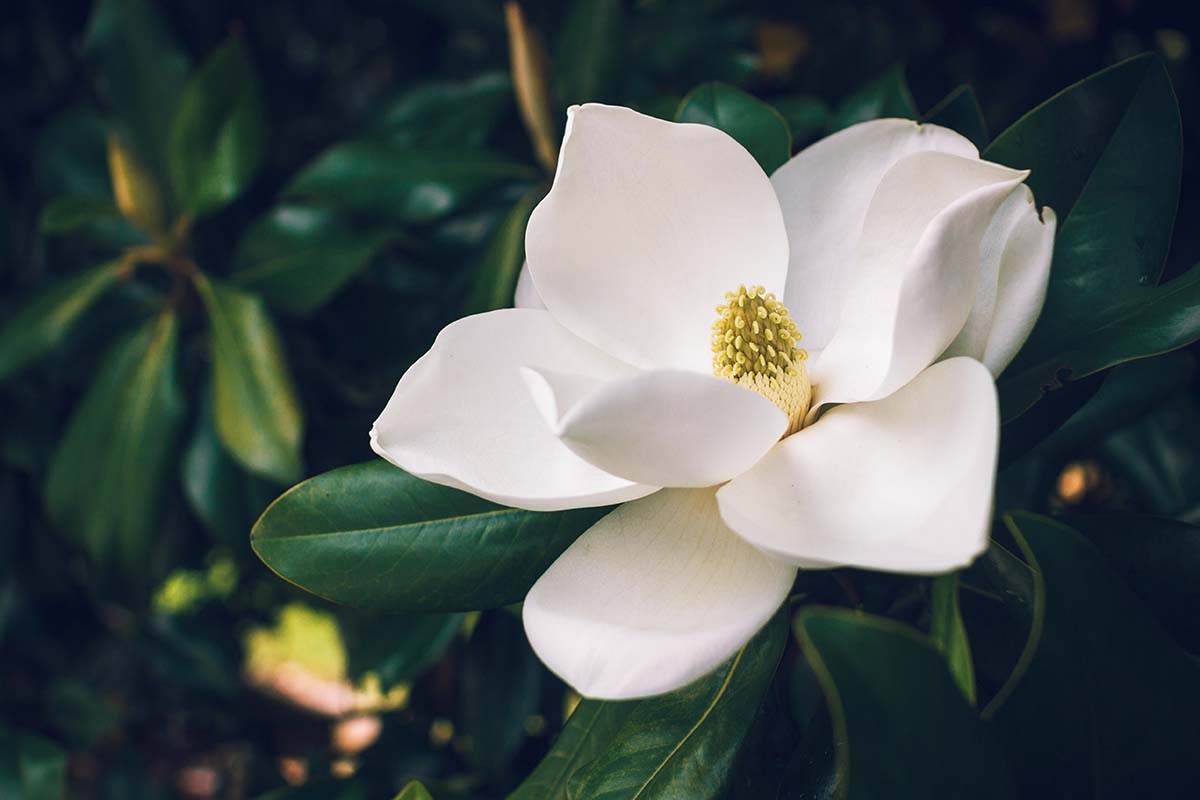
That doesn’t mean a tree won’t grow, it just means that whatever does grow won’t necessarily look like the parent.
In my area, saucer magnolias (Magnolia × soulangeana) are all the rage, but these trees are hybrids, so you can’t reproduce them from seed.
A Bit About Magnolia Seeds
At the center of each flower is a cone that is made up of follicles. It kind of looks like a soft pine cone. We call this entire thing the follicetum, or just the fruit, for short.

Each follicetum is held on a receptacle and contains fuzzy follicles that hold the typically red or orange seeds covered in fleshy arils. These look somewhat like young female pine cones.
Why the weird pod? Well, magnolias first evolved when dinosaurs roamed the earth. Back then, there were lots of insects that we know today as beetles, but there weren’t any bees.
That meant in order to be pollinated, magnolias had to rely on those beetles, and they weren’t as delicate and petite as bees, as you can probably imagine.
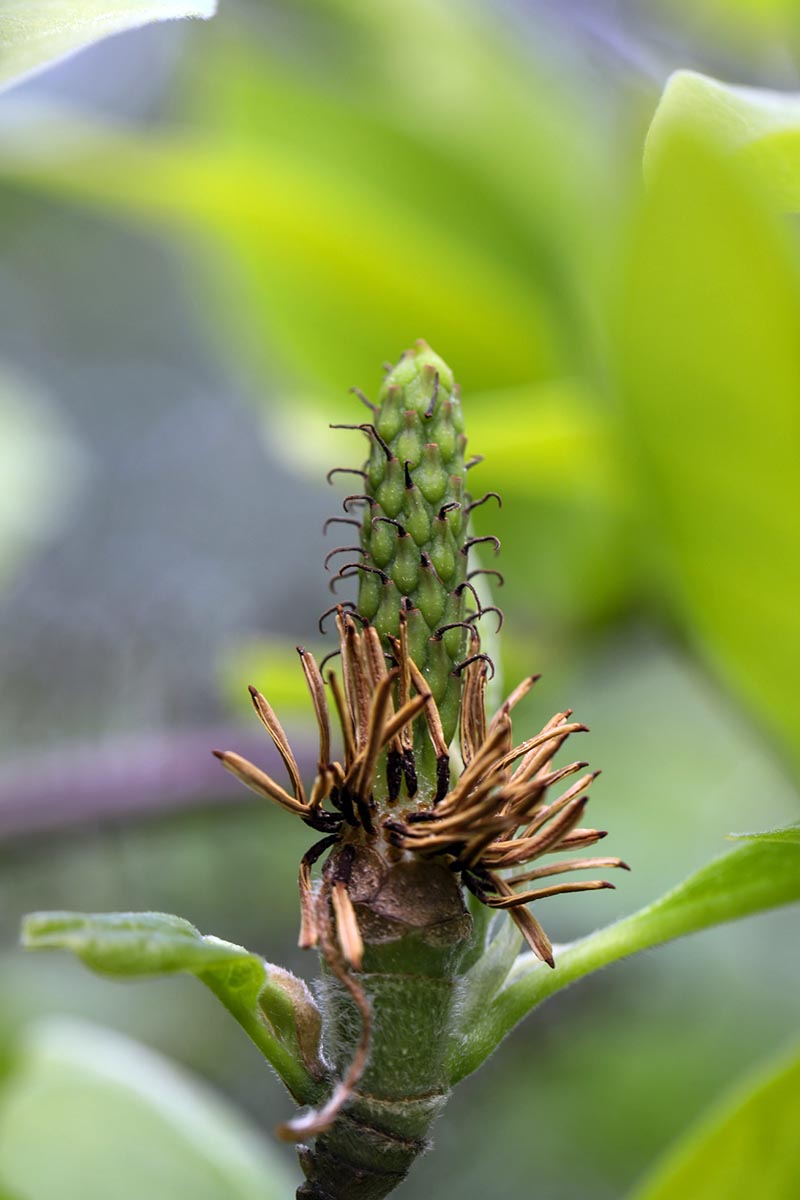
The beetles would climb into the flowers and use their mandibles to feed in there. To protect themselves from the beetles, magnolias developed tough carpels to encase the seeds.
Since these carpels look a lot like the male stamens – a part of the flower they like to feed on – it tricks the beetles into hanging out inside the fruits longer.
The fruit stays on the tree long after the petals drop. As it matures, the red or orange seeds develop and emerge from a split in the follicle.
Herbivores like squirrels, opossums, and birds eat the fruits and spread the seeds all over the place, eventually making new trees.
Harvesting
Magnolia seeds ripen in the fall. Once they emerge from the follicle and you can see the (usually) reddish-orange flesh, it’s harvest time. The trick is to beat the animals to the ripe fruits.
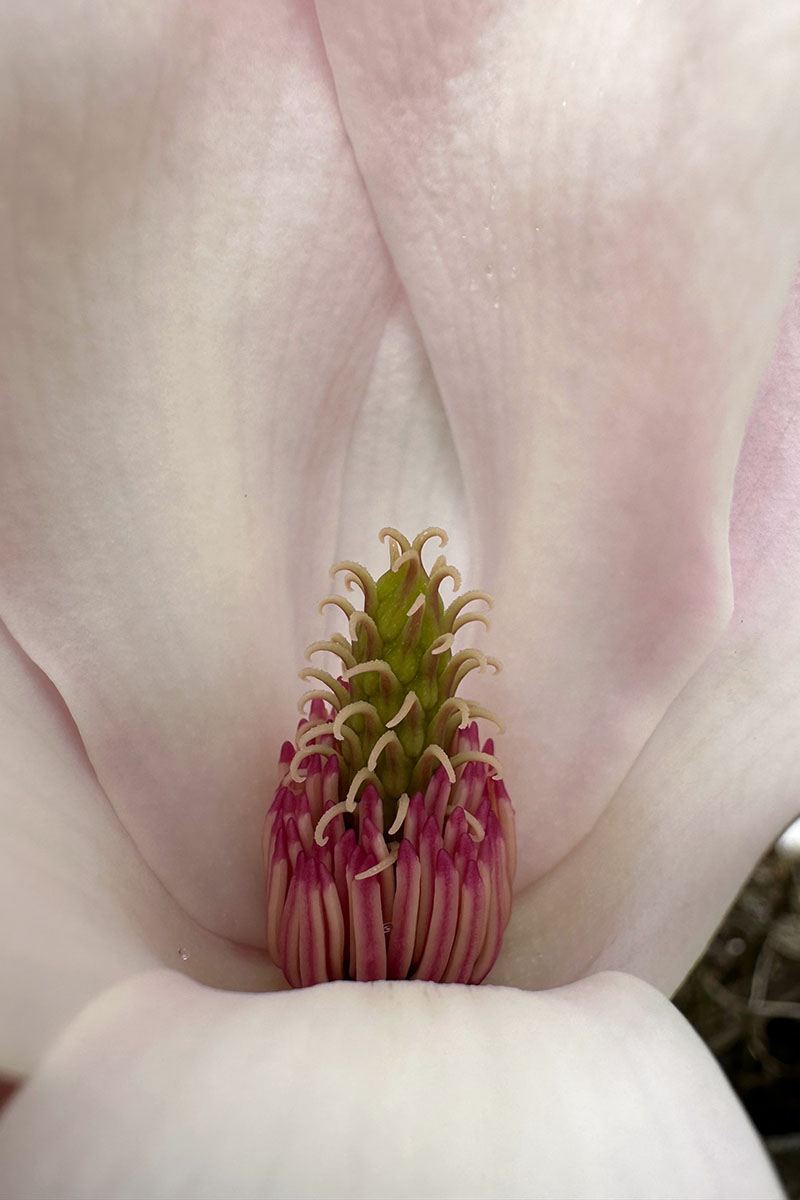
If you harvest too early, the fruits won’t be ripe yet. If you harvest too late, they might be squirrel poop already. You need to check the tree frequently to find that sweet spot.
You can also wait until the fruits have ejected themselves from the tree – you’ll find them on the ground under the canopy.
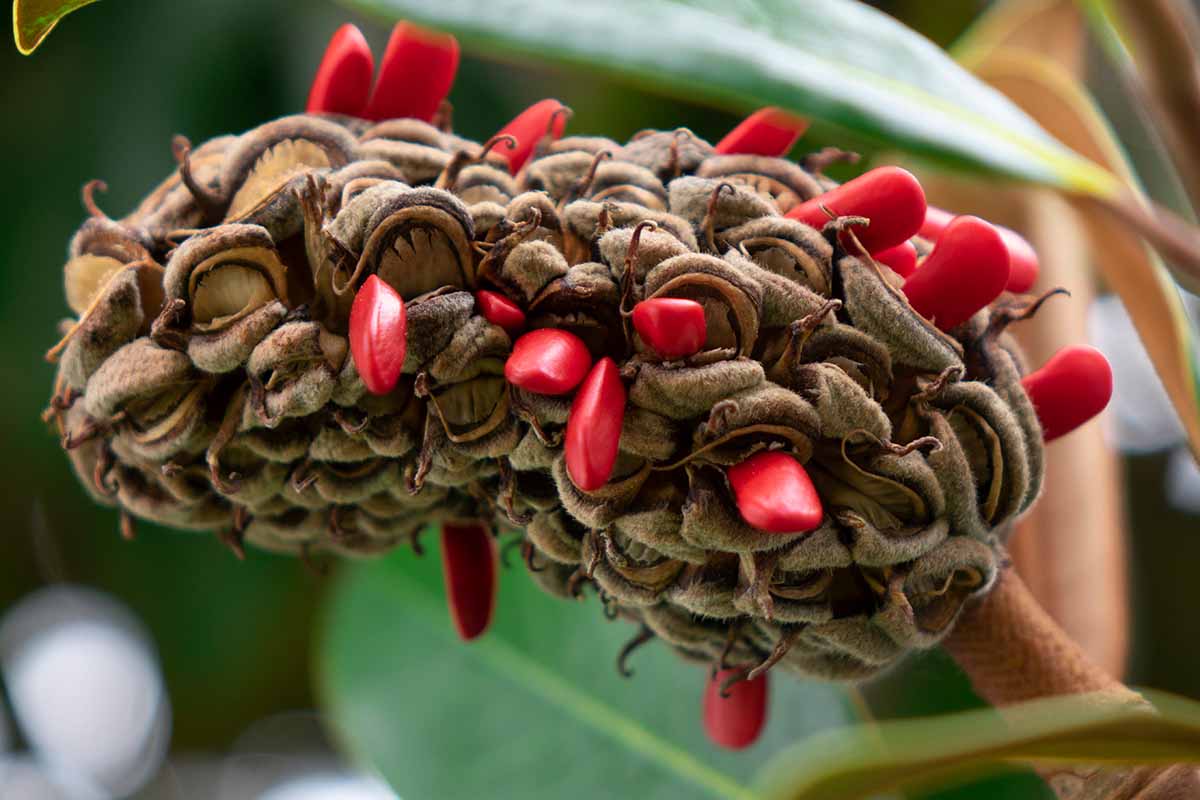
If you have multiple trees to choose from, look for a tree that had a bountiful floral display of healthy flowers this year. The blossoms shouldn’t be brown or spotted.
Of course, by the time you’re looking for the fruits, the petals are long gone, but just keep a mental note when you see potential trees for harvesting from.
Once you have the goods, rub the flesh under running water to remove it. You want to expose the fresh seed.
Lay the seeds out on a cookie sheet covered with a paper towel to let them dry out. Once they’re dry, you can store them for years in a cool, dry place until you’re ready to plant.
Preparation
Now that you have your seeds, soak them in water for 48 to 72 hours.
The purpose of this is to loosen the hard outer coating. After soaking, gently squeeze the end of the fruit to pop the seed out.
Next, it’s time to stratify the seed to prepare it for planting. You can artificially cold stratify them indoors.
Place the prepped seeds in moist (not wet) sand in a resealable bag and press all the air out of the bag. Seal it up and place the bag in the refrigerator.
They need to stay in a cool spot for up to 120 days. Check the sand to ensure it stays moist.
Start this process about 120 days before you expect temperatures to be around 70°F during the daytime and no lower than 50°F at night in the spring.
Planting and Care
Once the seeds have been stratified for 120 days and it’s around 50°F at night and around 70°F during the day in your area, it’s time to plant them outside.
Sow in prepared soil half an inch deep. The soil needs to be water retentive without draining poorly.
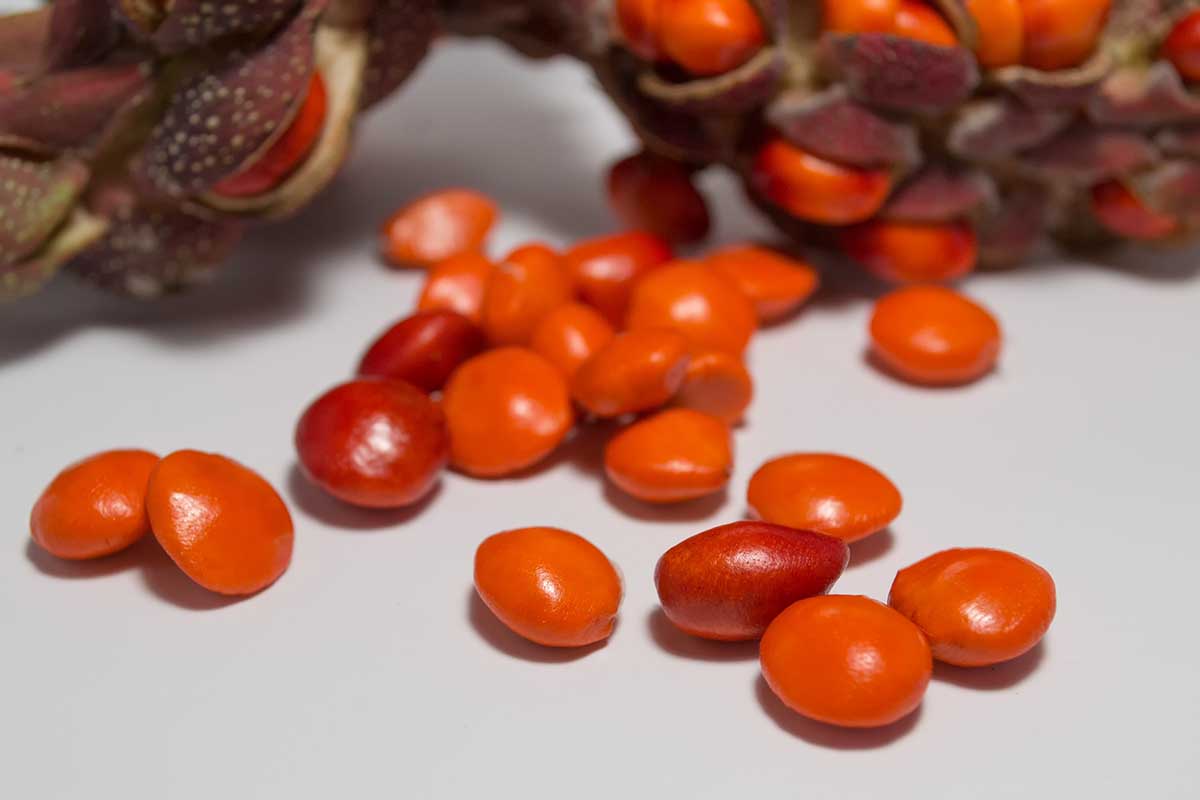
Eventually, the tree will grow beyond any of your attempts to amend the soil within a certain area, but you want to give your seedlings a fighting chance to become established.
To do this, amend the soil with lots of well-rotted compost at least a foot down and a foot wide.
Compost does double duty in that it makes soil water retentive and it improves drainage. It’s garden magic.
I always put two or three seeds in each spot where I want a tree to grow in case one or two don’t germinate.
Once the seed is in place, water the soil carefully so as not to disturb the soil. Keep watering until the soil is saturated but not soggy.
As the seedlings emerge, your job is to keep the soil moist but not wet. When the surface of the soil dries out, add a bit more moisture.
That’s all there is to it! Continue caring for your plants as described in our general guide to growing magnolias.
Make More Marvelous Magnolias
Part of what makes magnolias so interesting is their unique biology. It’s a blast to work with plant parts that are a little bit different from the usual flowers we know and love.
Propagating magnolias from seed is also a good skill to have in your back pocket if you want to save or reproduce a tree that you adore.
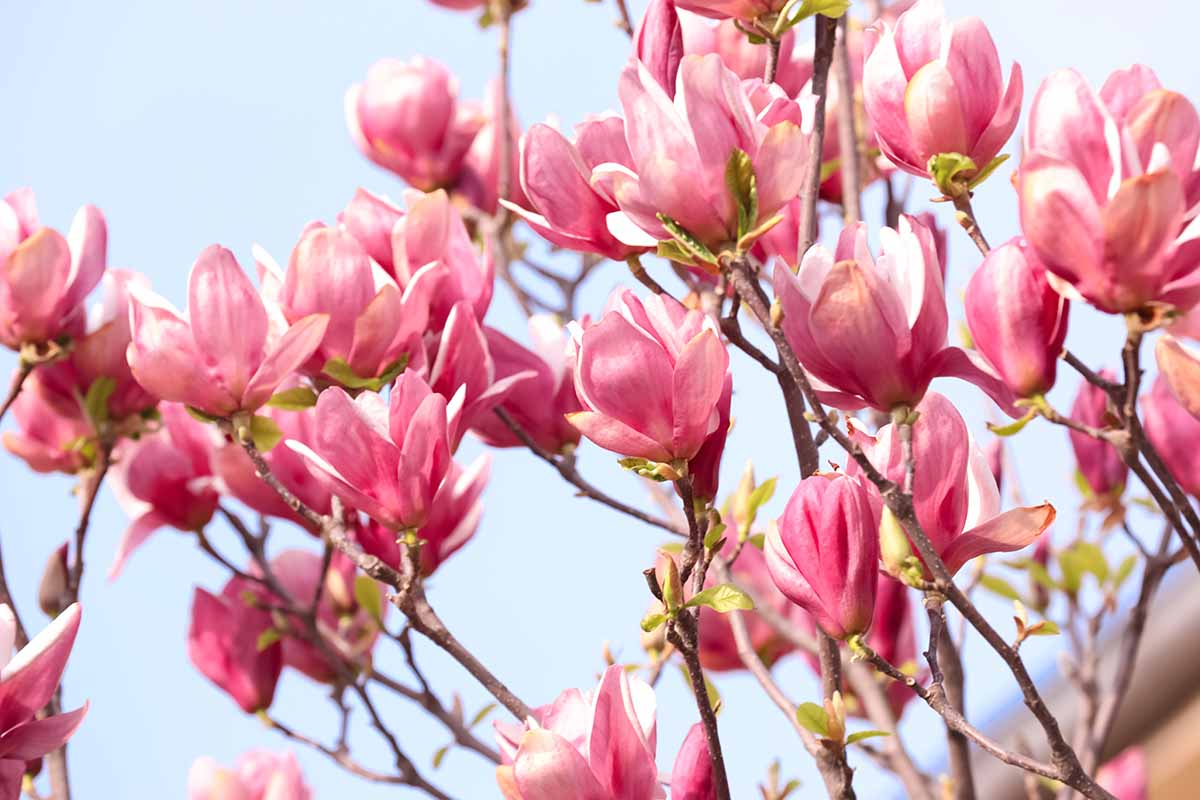
Remember that you need permission to take plant parts off of trees on private property. It’s perfectly legal to take a small number of seeds and flowers on Bureau of Land Management property. You can also obtain permits to take plant parts from national forest land.
Where are you getting your fruits from? A neighbor’s tree? Are you reproducing a tree that you own? Share with us in the comments.
And for more information about magnolias and how to grow them, check out these guides next:
Thank you for this excellent article! I have 4 magnolia saplings that have grown from seeds that I stratified this past winter. They are from the saucer magnolia. One of them blossomed an orange flower and now I know why -because it’s a hybrid. I’m in Toronto and these trees do well here but I am scared to plant these babies in the yard. Do you know when to safely plant them? If I can’t do it this year, should I keep them in the house during the winter and just keep repotting them as they grow?
Thank you!
Hi Eva, congrats on the magnolia babies! I would plant them in the early fall when the weather has cooled a bit, but while there’s still enough time for them to become established. Deciduous trees need to be outside where they can go dormant in the winter, so you wouldn’t want to keep them indoors through the winter. If you have a greenhouse you could keep them in until you can plant in the spring, that would be ideal. Once you plant them, provide them with some extra protection. A thick layer of mulch and even some pine boughs can… Read more »